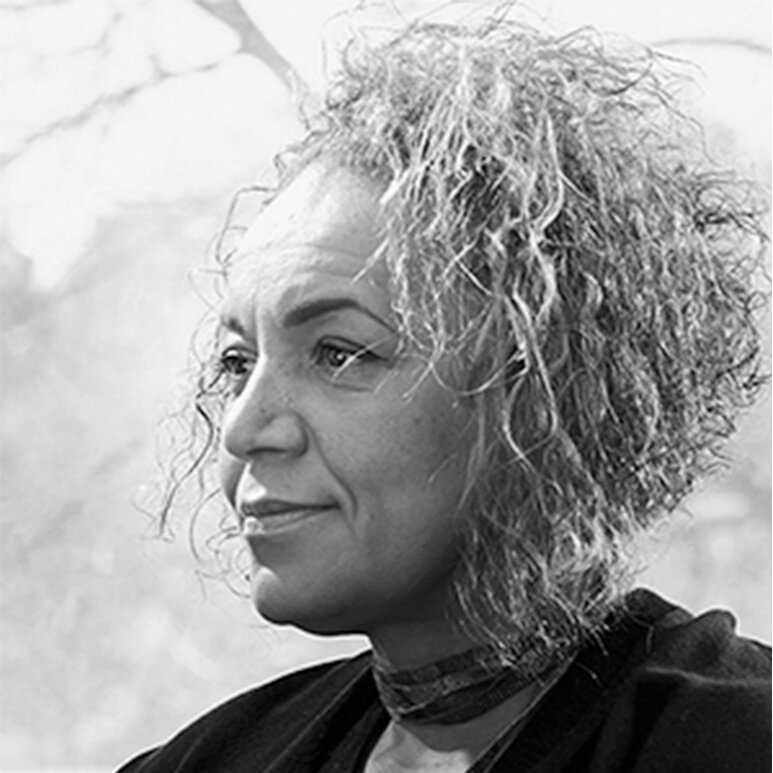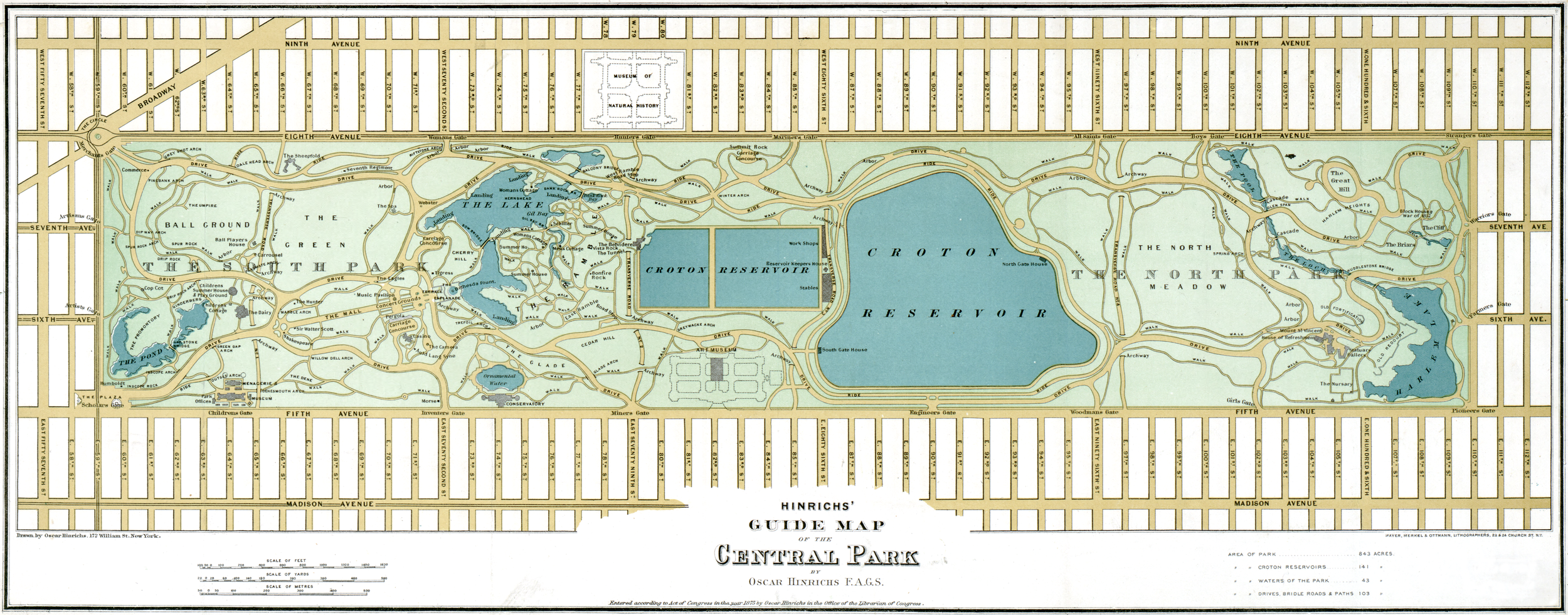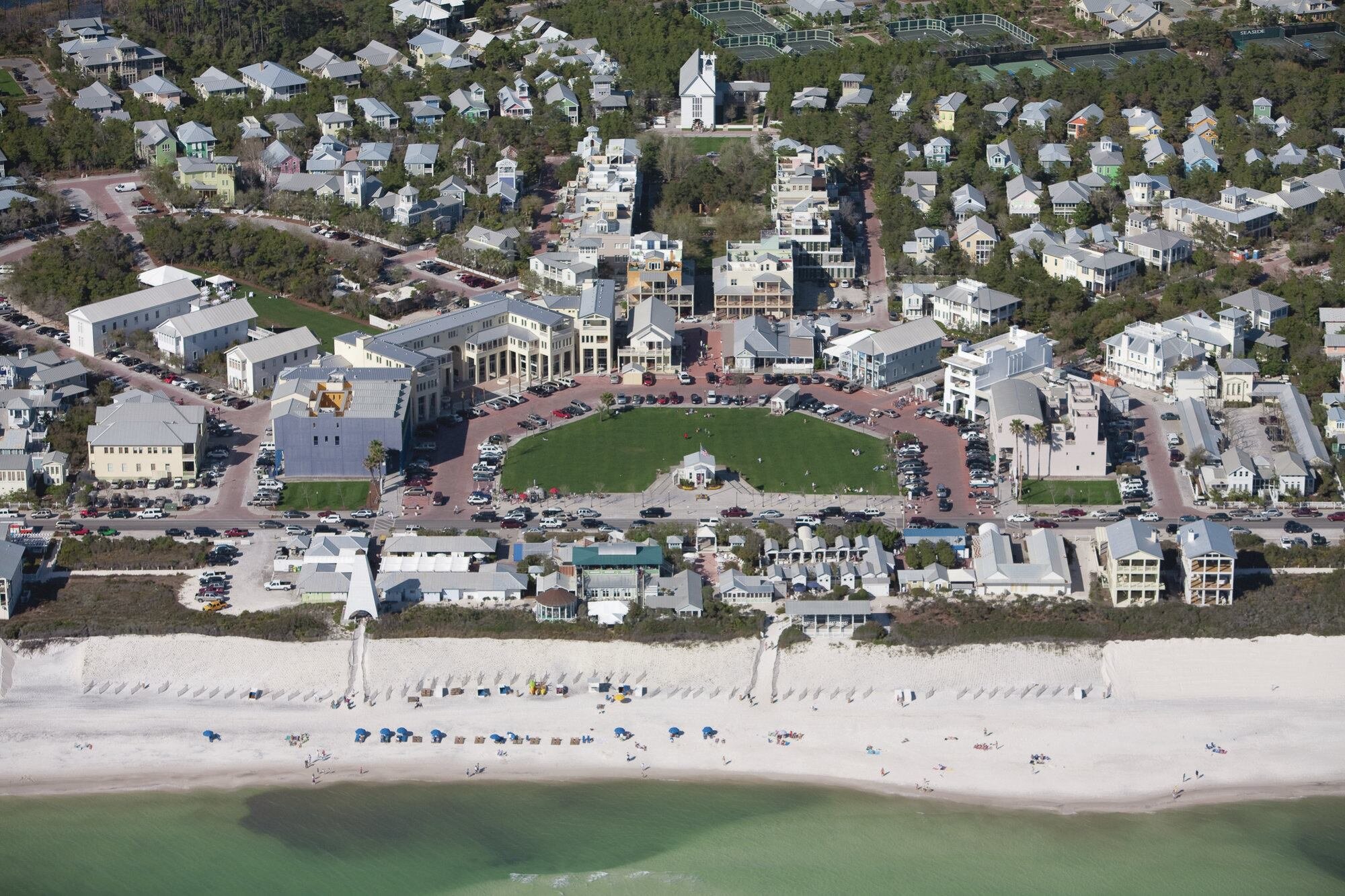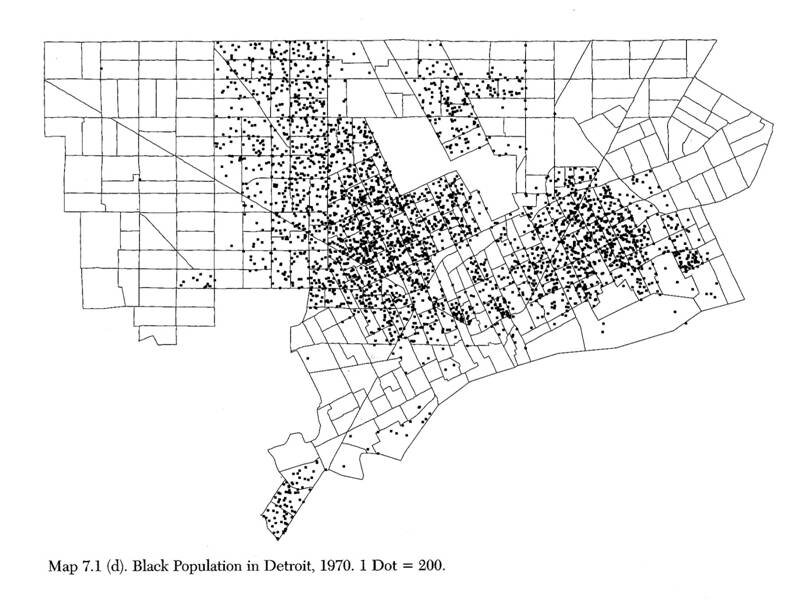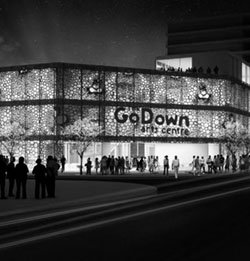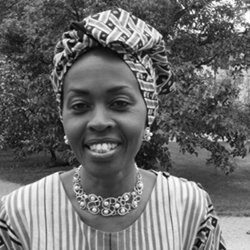"Race &" is a podcast sponsored by the Society of Architectural Historians that explores the influence of race and race thinking on the built environment. Follow our co-hosts Charles Davis (SUNY Buffalo) and Maura Lucking (UCLA) as they conduct interviews, roundtable discussions, and conversations with the foremost academics of the arts and sciences to recover the untold stories of the people and forces that shape the world we live in.
Three Foundational Texts on Race and Architecture (c.2000)
In this episode, Charles Davis interviews Darell Fields, Continuing Lecturer at UC Berkeley, Adjunct Professor at California College of the Arts and Principal at the Maxine; Craig Barton, University Architect and Professor of the Practice in Architecture at Brown University; and Lesley Lokko, Dean and Professor at City College of New York’s Spitzer School of Design; on their experiences in academia, what lead them to the current positions, and how the deaths of George Floyd, Ahmaud Arbery, and Breonna Taylor, along with the Black Lives Matter protests can start to change the both the discourse and the landscape of architecture departments across the country.
Darell Fields - Architecture in Black: Theory, Space, Appearance
Craig Barton - Sites of Memory: Perspectives on Architecture and Race
Lesley Lokko - White Papers, Black Marks: Architecture, Race, Culture
Histories of Race, Primitivism & Media in Design
In this episode, Maura Lucking speaks with Delinda Collier, Associate Professor of Art History at the School of the Art Institute of Chicago, and Ginger Nolan, Assistant Professor of Architecture at USC, about each of their new book projects. The themes of their work discussed include the intertwined histories of race and primitivism in art and architectural history, media and technology studies, and histories of modernism in Africa. The discussion touches on the coded ways these disciplines have traditionally addressed race through concepts like the fetish or the primitive hut, as well as the importance of working interdisciplinarily to reveal practices of racialization and white supremacism within histories of art and architecture.
Ginger Nolan - Author of Savage Mind to Savage Machine
Delinda Collier - Author of Media Primitivism: Technological Art in Africa
Rewriting American Architecture: Recovering Black Narratives of Space
In this episode, join Brian Goldstein, Assistant Professor of Architectural History at Swarthmore College, Maura Lucking, PhD Candidate at UCLA, and Amber Wiley, Assistant Professor of Art History at Rutgers University for a discussion surrounding the process of recovering Black history through the traces left in the built environment and how this affects the way we understand and frame the architectural canon. This episode is a recording of a colloquium entitled Rewriting American Architecture: Recovering Black Narratives of Space hosted by Charles L Davis II, Assistant Professor of Architectural History and Criticism at SUNY Buffalo.
Amber Wiley - “Schools and Prisons”
Special Series : American Architecture as a Settler Colonial Project
In this series, produced in collaboration with Princeton’s School of Architecture, we re-examine American Architecture through the lens of Settler Colonialism in order to understand how the discourse surrounding race in the United States has distorted our conception of the built environment. These episodes seek to both critique the canonical history of American Architecture as it exists today and recover the work of people of color in an effort to understand the countercultural definitions of architecture that have been lost to time. Many thanks to Dean Monica Ponce de Leon and the Master’s and PhD students of Princeton’s School of Architecture for their assistance producing this series.
Series Trailer
Emmanuel Leutze, “George Washington Crossing the Delaware” (1851)
Part I: Reinterpreting the Canon
The following episodes limn the settler colonial discourses associated with canonical works of American architecture. These examples include both built works, landscapes and theoretical texts that have influenced architectural history from the late 19th century to the present.
The Settler Colonial Narratives of Downing’s Cottage Residences (1842)
Lisa Ramsburg & Chris Loofs
In 1842, Andrew Jackson Downing wrote Cottage Residences; or a series of designs for rural cottages and cottage-villas and their gardens and grounds adapted to North America. By paying equal attention to what is made explicit and to what is intentionally omitted, this podcast will situate the book in a context of intersecting forces of settler colonialism, imperialism, and post-colonialism. Using the subtitle of the book as an outline, we will briefly delve into: the function of pattern books in mid 19th century America; the implications and framing of the “cottage”; the role of landscape and nature in property-ownership; and the use of the Anglo-Saxon identity as a legitimizing narrative for American architecture.
The Settler Colonial Narratives of the Biltmore Estate (1889-95)
Elena M’Bouroukounda & Piao Liu
This is “A House on the Hill,” a podcast about deconstructing settler colonial narratives in architectural history. My name is Piao Liu and my name is Elena M’Bouroukounda and today we invite you to join our conversation about the 19th century American Biltmore Estate. In this episode, we will examine the critical relationship between Appalachia, the Biltmore estate, and French Renaissance architecture by considering the role of folk identity in the construction of settler colonial narratives.
The Settler Colonial Narratives of Central Park (1825-50)
Evan Crawford & Grace Lee
Today we explore the Seneca Village- one of Manhattan's first predominantly Black neighborhoods. Started in 1825, Seneca Village was settled by freed African-Americans when parcels of land in the area were subdivided and sold off. Over the next few years, it would grow to become a thriving, heterogeneous community of over 220 residents, 50 homes, 3 churches. However, starting in the 1850s, the residents of Seneca Village and the territory of what would become Central Park were faced with eminent domain actions by the city of New York. The erasure of Seneca Village and surrounding neighborhoods gave way to Olmsted’s reassertion of the space as a “natural” terrain. The dominant narrative of Central Park’s transformation from an untamed tabula rasa wilderness to the tamed, domesticated urban park is an unacknowledged story of settler colonialism.
The Settler Colonial Narratives of Fiske Kimball’s American Architecture (1928)
Evan Crawford & Grace Lee
When Sidney Fiske Kimball’s book American Architecture was published in 1928, a peer reviewer at the time praised its vision by remarking that Kimball “recognizes both the body and soul of architecture.” This utterance was not simply high praise. Moreso, it was a reassertion of the central claim in Kimball’s book: that American architecture had a body and soul; that it had, in short, a distinct and definable identity. This podcast investigates how this idea of a distinct American identity was formed in connection with architecture, and architectural history, through Kimball’s book American Architecture. What does it mean to recognize a ‘body and soul of architecture’ in the nation building context of the 1920s? And what legacy has it left for us today? In our discussion of Sidney Fiske Kimball’s book American Architecture we bring forward examples from the text to understand how Kimball’s identification of “American Architecture” was constructed through the confluence of race, capitalism, labor, and settler colonialism. We argue that Kimball’s book uses these concerns to construct an origin story and historical myth for architecture that promotes white ways of being through the doctrine of progress.
The Settler Colonial Narratives of Frank Lloyd Wright’s Jacobs House (1937)
Julia Medina & Taka Tachibe
This podcast revisits the work of Frank Lloyd Wright, acclaimed American architect, at three scales: first, at a national scale, with his vision for a Usonia, then the urban scale, with the theoretical Broadacre City, and finally at the building level, with a close eye on the Jacobs House, the first in his Usonian series. Princeton University architecture graduate students Julia Medina and Taka Tachibe examine these aspects of Wright’s career and ideology with a critical eye toward the aspects of settler colonialism and cultural appropriation in the work.
The Settler Colonial Narratives of Levittown, Pennsylvania (1947-57)
Ellen Harris & Dillon Horwitz
Levittown is often thought of as a paragon of mass-housing efficiency and as an influential model of how to execute suburban sprawl. It is also a primary spatiotemporal incidence -- and general representation -- of a settler colonial disposition toward occupying land in the United States. We propose that by focusing on the parallel nature of written policies that codified segregation, discrimination, and other white supremicist values, and the instantiation of these systems and beliefs “on the ground,” in the form of pastoral, quaint imagery and objects on a typical suburban street, it is possible to see how Levittown -- and suburbia at large -- used traditional settler visual cues to both soften the insidious nature of the discriminatory policies underlying its organization, as well as to signal to prospective and current homeowners that this form of community was an extension -- a direct descendant -- of the centuries-old practice of white folk settling in the country(side). Levittown is known among planners, designers, and architects for its role in ushering in a new mode of living that is highly dependent on the petrol economy, and it is also, more or less, already recognized as being a prime example of racist housing policies. In this podcast, we seek to more explicitly show how images embody and convey meaning, and to assert, via the example of Levittown, that innocuous, even decorative objects and architectural constructs and expressions, may symbolize far more sinister machinations.
The Settler Colonial Narratives of the “Charter for New Urbanism” (1999)
Maeliosa Barstow & Helen Fialkowski
Responding to the modern development of unchecked placeless suburban sprawl, and the disinvestment of inner city centers, a group of architects, led by couple Elizabeth Plater-Zyberk and Andres Duany, launched a movement with the intention of a radical paradigm shift in the way we conceive urbanism and urban planning. Termed New Urbanism, accompanied by the Charter for New Urbanism released in 1999, this movement advocated for the restoration of existing urban centers and towns within coherent metropolitan regions, the reconfiguration of sprawling suburbs into communities of real neighborhoods and diverse districts, the conservation of natural environments and the preservation of our built legacy. Although sounding well-intentioned, the goal of New Urbanism is a retreat and renewal of planned communities of the early 1900’s. We argue that by retreating to this form of “traditional” community design, new urbanists brought back romanticized notions of the earliest American colonies and by doing so reinforced settler colonial narratives of land acquisition and white placemaking.
The Settler Colonial Narratives of Vincent Scully’s Architectural History
Michael Lee & Anna Kerr & Jaqueline Mix
In this episode, we discuss historian Vincent Scully’s legacy in constructing a narrative of American architecture. A year ago, the introduction to art history course at Yale, previously taught by Scully, was removed from the curriculum. By looking deeper into his accounts of American architecture through a settler colonial lens, namely at the Stick and Shingle Styles, we begin to uncover new ways of reading and understanding history.
Part II: Recovering Lost Narratives
The following episodes recover the lost contributions of people of color in American architecture. These case studies include built works, physical landscapes and theoretical texts that have influenced architectural history from the late 19th century to the present.
Reconstructing the Image of San Francisco’s Chinatown (1906-15)
Elena M’Bouroukounda & Piao Liu
This is “All Roads Lead to Chinatown,” a podcast about deconstructing settler colonial narratives in architectural history. My name is Piao Liu and my name is Elena M’Bouroukounda and we are both from The School of Architecture in Princeton University. This podcast will analyze the reconstruction of San Francisco Chinatown through two architecture cases after the earthquake in 1906, exploring how the very image of Chinatown was realized, produced, and experienced in the beginning of the 20th century.
Recollections of Detroit’s Urban Frontier
Evan Crawford & Grace Lee
In our previous episode, our investigation on Seneca Village led us to consider the erasure of black urban spaces and settlements. In this episode, we question how this narrative intersects with current ecologies of displacement and transformations of the populous in the City of Detroit, Michigan. We investigate these topics through a more informal interview about Evan’s own personal narratives and experiences with urban greening in Detroit, along with discussions surrounding current trends of reverse white flight and evolved settler colonialism as gentrification of the urban frontier. Enjoy the show!
The Racial Dynamics of Los Angeles’s Metro
Ellen Harris & Dillon Horwitz
Public transportation systems operating within American cities are highly racialized. By tying together first-hand accounts, news stories, and a range of data from studies in different disciplines, with an emphasis on conditions in Los Angeles, we aim to show how the country’s systems of capital and infrastructure are deeply entwined and organized to make people of color feel invisible and unwelcome as they navigate through space. At both macro and micro levels, these networks reinforce segregation and the policing of bodies, imposing damaging and deliberate impediments on the freedom and agency of people of color. It is clear, when looking at investment decisions and service plans, that funding and effective routes are steered away from communities of color toward vanity projects for white people. Transportation systems may not necessarily seem to fit into the traditional definition of architecture, but they are indisputably a part of the physical environment. As such, they play an important role in providing – or limiting – access to other architectures of society, whether those places be for work, domesticity, or leisure. Again, though, this infrastructure is in and of itself a site of racialized power dynamics, a direct mode for industries and the government to filter, control, and corral people of color. Studying transportation networks is a way to explore the spatial practices of people, to understand how settler colonialism and other socioeconomic dynamics condition life for disenfranchised populations, and to see how space and material can be used to keep people apart and assert who belongs where.
From Little Tokyo to Bronzeville and Back
Julia Medina & Taka Tachibe
In this podcast, we examine Little Tokyo in Los Angeles in the 1940s during and after Japanese American internment, its brief transformation into a prominent center of black life called Bronzeville, and the role of whiteness in the formation and subjugation of non-white spaces. By examining general understandings of “ethnic landscapes” alongside the history of racialized spaces like ‘ghettoes,’ we seek to uncover overlooked histories latent within them that reveal racial dynamics still relevant today.
Octavia Butler’s Xenogenesis Trilogy as Settler Colony (1987-89)
Lisa Ramsburg & Chris Loofs
Octavia Butler’s Xenogenesis Trilogy, published in 1987-1989 and republished in 2000 as Lilith’s Brood, follows the generational struggle of humanity against the alien race called the Oankali. Through an analysis of the events of the book, this podcast will situate the trilogy as a precursor to Afrofuturism within a context of settler colonialism. Through our conversation we will briefly delve into: how settler-colonialism has historically approached indigeneity; feminist models of resistance; race and representation; and the language settler colonialism uses to categorize architecture.
The Liminal Space of African American Porch Culture
Maeliosa Barstow & Helen Fialkowski
Porches, their origin in the United States as a space constructed by and for the Black body, has become a key architectural space fundamental to Black culture as a space for exchange, storytelling and comfort. The porch, as a typology, often linked to the shotgun house, through its image making, produces a symbol for Black Identity in the United States. It therefore subverts the settler colonialist strategies and regimes of exclusion and the history of producing spaces around whiteness. By looking at the construction of these liminal spaces produced at the boundary between the private dwelling and the public sphere, we might better understand how the manifestation of Black culture is inherently tied to physical architectural spaces.
The Settler Colonial Narratives of Black Panther’s Wakanda (2018)
Michael Lee & Anna Kerr & Jaqueline Mix
In this episode, we take a trip to Wakanda, the fictional country in Marvel’s Black Panther, and explore and analyze the speculative architecture through a dual-lens of Afrofuturism and settler colonialism. What can we learn about architecture from Wakanda? And how can Black Panther learn from the critiques of the series' first installment?
Special Series: Building Solidarities
Our guest series "Building Solidarities: Racial Justice in the Built Environment," produced by Dr. Anooradha Iyer Siddiqi and students in the course "Colonial Practices" at Barnard College and Columbia University Institute of Comparative Literature and Society, was originally staged as a series of discussions in the fall of 2020. The series was conceived as a form of mutual pedagogy between the campus and the public, through dialogues on urgent questions about constructed environments, urban life, and ecologies.
Participating Students from Barnard College and Columbia University: Kojo Abudu, Maya Bickel, Aishah Bostani, Gabriel Garon, Joseph Gedeon, Nur Jabarin, Mai Morsy, Samuel Needleman, Dora O’Neill, Amber Officer-Narvasa, Mahum Qazi, Javairia Shahid, Christopher Taktak, Noa Weiss, Athena Wyatt
Participating Community Partners: The GoDown Arts Centre, Navatman, The Red Nation, Warscapes, Jadaliyya, Status Podcast
Institutional Inhabitations
This episode of the Building Solidarities series discussed structuring cultural institutions and critical communities of black-brown solidarity in the African and South Asian diasporas of Nairobi and New York. Discussants from the GoDown Arts Centre and Navatman included Joy Mboya, Garnette Oluoch-Olunya, Sahasra Sambamoorthi, and Keisha Brown.
Dr. Anooradha Iyer Siddiqi, Assistant Professor of Architecture, Barnard College
The GoDown Arts Centre, one of Kenya's leading centers for arts and culture
Navatman, a home for the Indian classical performing arts in NYC
Joy Mboya
Garnette Oluoch-Olunya
Sahasra Sambamoorthi
Keisha Brown
A recording of this dialogue is also available on the following platform: Navatman on YouTube webcast
Building Historical Consciousness
This episode of the Building Solidarities series discussed Indigenous thinking on infrastructure and architecture as sites for historical consciousness and contemporary creative practice in North America.
Dr. Anooradha Iyer Siddiqi, Assistant Professor of Architecture, Barnard College
Chris Cornelius (Oneida Nation), Studio:Indigenous founder
Elsa MH Mäki (Anishanaabe), co-founder of Harvard Indigenous Design Collective and editor-at-large, Avery Review
Dr. Nick Estes (Lower Brule Sioux Tribe), Assistant Professor of American Studies, University of New Mexico
A recording of this dialogue is also available on the following platform: The Red Nation podcast
Monumental Landscapes
This episode of the Building Solidarities series considered landscapes of monumentality through iconoclasm, replacement, and renaming of built and natural structures in Nairobi and Minneapolis.
Dr. Anooradha Iyer Siddiqi, Assistant Professor of Architecture, Barnard College
Dr. Kate Beane (Flandreau Santee Dakota and Muskogee Creek), Executive Director, Minnesota Museum of American Art
Dr. Lydia Waithira Muthuma, Lecturer in Visual Arts, Technical University of Kenya
Dr. Bhakti Shringarpure, Associate Professor of English and Women’s Gender and Sexuality Studies, University of Connecticut
A recording of this dialogue is also available on the following platform: Warscapes
Environmental Reclamations
This episode of the Building Solidarities series discussed environmental diasporas and ecological reclamation in the "Somalias" of Dadaab, Minneapolis, and Mogadishu.
Dr. Anooradha Iyer Siddiqi, Assistant Professor of Architecture, Barnard College
Alishine Osman, Executive Director, Pennsylvania Center for Refugees and Immigrants
Anisa Salat, Shuraako, a program of One Earth Future (OEF)
Dr. Huma Gupta, Lecturer, Aga Khan Program for Islamic Architecture at MIT
A recording of this dialogue is also available on the following platforms: Jadaliyya.com Environment and Status podcast




